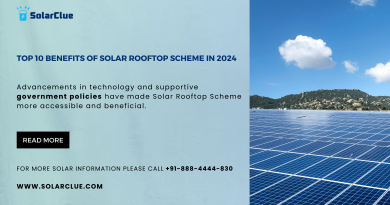Which solar power plant is better?
Solar power has emerged as a formidable force in the energy industry, offering an eco-friendly and sustainable solution to our planet’s energy needs. As solar technology continues to evolve, the debate over which solar power plant is superior has intensified. In this blog, we will delve into the two main types of solar power plants – photovoltaic (PV) and concentrated solar power (CSP) – to determine which one holds the crown. Strap on your solar goggles as we explore the exciting world of solar power!
Table of Contents
Photovoltaic Power Plants: Harnessing the Power of the Sun
First, let’s shed some light on photovoltaic power plants. These plants utilize solar panels made of semiconductor materials like silicon to convert sunlight directly into electricity. PV power plants are the most commonly used type of solar power plants due to their affordability and versatility.
One of the major advantages of PV power plants is their scalability. They can be installed on rooftops, ground-mounted systems, or even integrated into building materials, enabling seamless integration into existing infrastructure. Additionally, the maintenance requirements for PV power plants are relatively low, resulting in reduced operational costs over time.
However, one limitation of PV power plants is their dependence on daylight hours. As solar panels directly convert sunlight into electricity, they produce little to no power during nighttime or in heavily cloudy conditions. This intermittency can be mitigated by incorporating battery storage systems, but it adds an extra layer of cost and complexity.
Concentrated Solar Power Plants: A Towering Achievement
Now, let’s turn our attention to concentrated solar power plants. Unlike PV power plants, CSP plants concentrate sunlight to heat up a working fluid, typically a liquid or gas, which then drives a turbine to generate electricity. CSP plants employ various technologies such as parabolic troughs, solar power towers, and dish Stirling systems.
CSP power plants have the advantage of being able to store thermal energy, allowing them to generate electricity even when the sun is not shining. This feature makes them highly reliable and enables them to provide consistent power output day and night. Moreover, the stored thermal energy can be used to heat water, providing a renewable source of hot water for residential and industrial purposes.
However, CSP power plants come with a higher upfront cost compared to PV power plants. The intricate mirror and receiver systems necessary for concentrating sunlight require more complex engineering, resulting in increased capital expenditure. Additionally, CSP plants also require a vast amount of land to accommodate their large solar collectors.
Comparing the Pros and Cons
Now that we have explored the key features of both types of solar power plants, let’s weigh the pros and cons to determine which one is superior.
PV power plants excel in terms of affordability, scalability, and ease of maintenance. They can be seamlessly integrated into various settings, making them a flexible choice for both urban and rural areas. However, the intermittent nature of PV power generation remains a drawback, necessitating the inclusion of expensive battery storage systems.
On the other hand, CSP power plants offer a reliable and consistent energy supply, thanks to thermal energy storage. They are particularly suitable for regions with high direct solar radiation and long periods of sunlight. However, the higher initial investment and land requirements pose significant challenges to widespread adoption.
The Verdict
Illuminate your path to a greener future with SolarClue®! While both photovoltaic (PV) and concentrated solar power (CSP) plants have their merits, it is evident that there is no one-size-fits-all solution. The choice between PV and CSP power plants greatly depends on the specific needs and circumstances of each project.
If affordability, scalability, and easy integration are the utmost priorities, PV power plants shine brightly. However, for regions with ample sunlight and a demand for a consistent power supply, the advanced technology and energy storage capabilities of CSP power plants make them a compelling choice.
In conclusion, the best solar power plant ultimately boils down to a careful examination of the project requirements and available resources. Whether it’s PV or CSP, one thing is certain – solar energy, with the guidance of SolarClue®, will continue to illuminate our path toward a greener and more sustainable future.
Frequently Asked Questions
The best choice depends on factors like energy needs, available space, and budget. Assessing these will guide your decision.
Efficiency is assessed by the conversion rate of sunlight into electricity. Higher efficiency means more energy production.
Yes, there are various types, including photovoltaic (PV) systems, concentrating solar power (CSP) plants, and hybrid solar systems.
Consider location, available sunlight, system size, and budget when deciding on the most suitable solar power plant.
While some components are DIY-friendly, consulting professionals for system design and installation is recommended for optimal results.
Yes, reputable manufacturers provide warranties for solar power plants, covering equipment and performance.
Installation duration varies based on the size and complexity of the plant, ranging from a few days to several weeks.
Yes, many solar power plants are grid-tied, allowing bidirectional energy flow and potential compensation for excess energy.
Many regions offer incentives, rebates, or tax credits to promote the adoption of solar power plants.
Regular cleaning, monitoring system performance, and checking connections are essential for the maintenance of a solar power plant.



